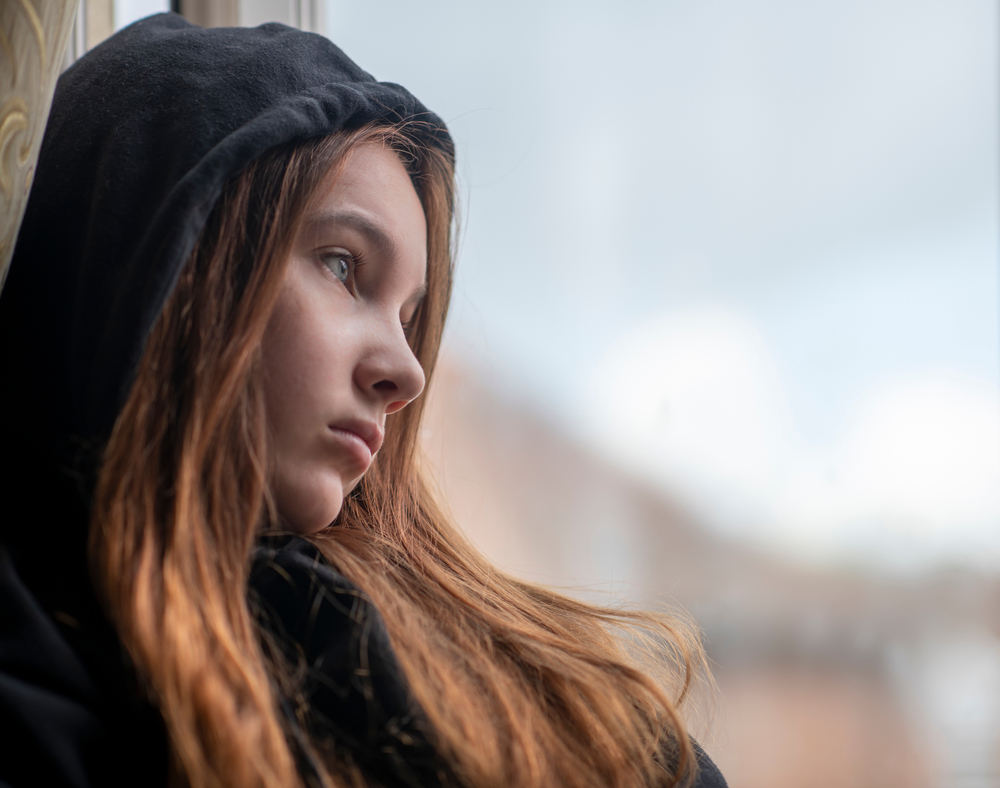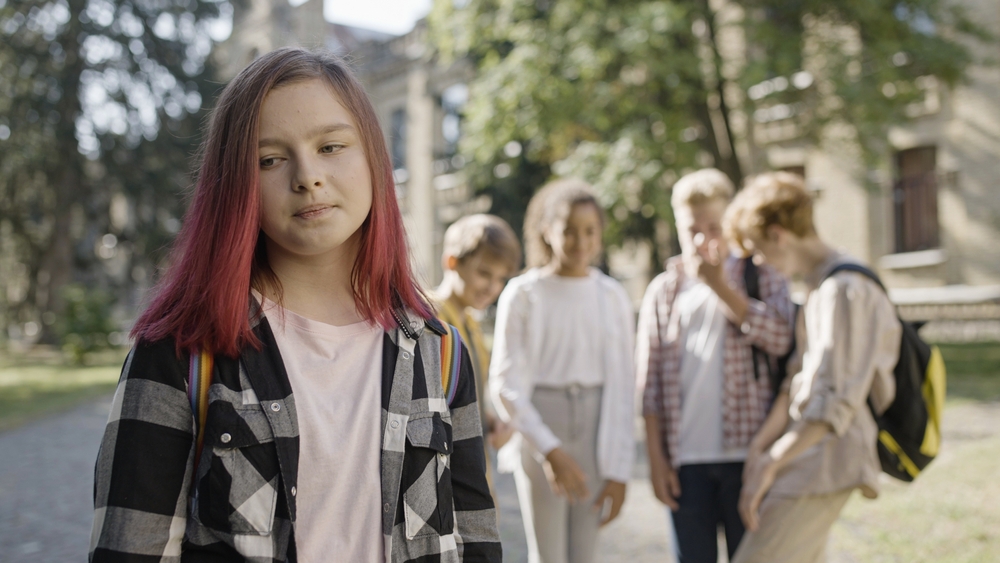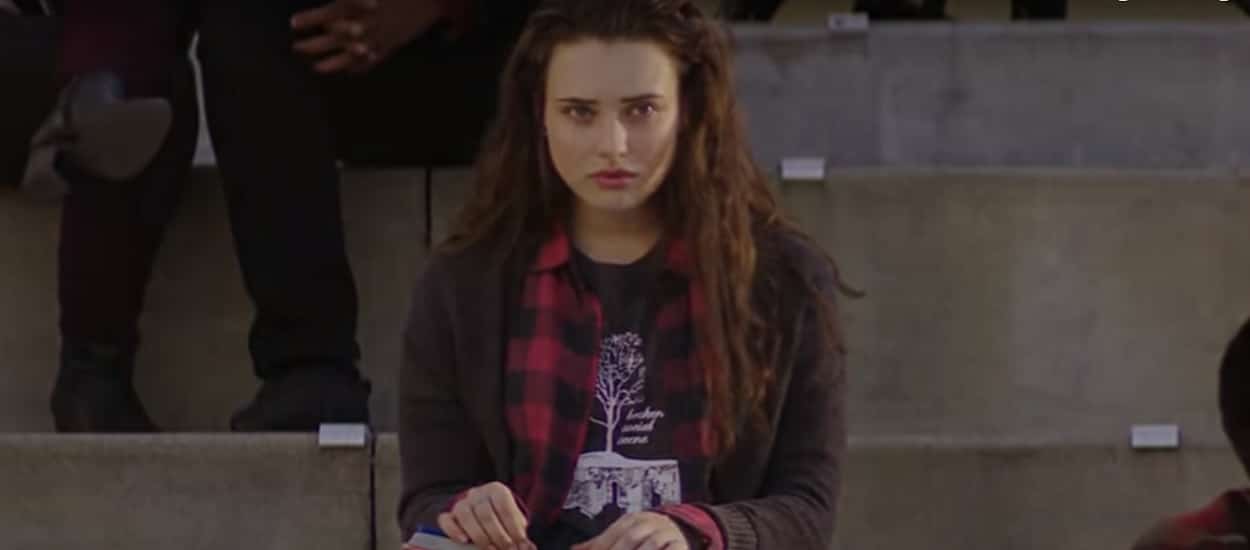Think of this as a sort of companion piece to last week’s blog piece, How to Prevent Teen Suicide. That piece was meant as a resource for parents. This piece has a different focus. It’s about the Netflix series, 13 Reasons Why. I just watched the first season of this compelling drama and I had to (somewhat) concur with my teenage son, “Don’t watch it. You’ll just want to kill yourself.”
It’s not that I want to kill myself after watching the series. It’s that I think teens will want to kill themselves after they watch this show, or at least some teens, many teens (thankfully, my son is still with us).
I think a lot of us forget how intense it felt to be a teen.
13 Reasons Why captures that intensity and makes the case that it just feels like too much sometimes and that the only way to get away from it—from all that stress and pain—is to end your life.

See, I remember that and even if I didn’t, this show was going to bring it back to me. It’s brilliant. The kids, though they’re from a more modern era, aren’t all that different from the kids with whom I went to school. The dynamic is exactly the same. The kinds of things that happened then, those are the same things that happen now, if the show is to be believed.
And the show is utterly believable.
Experts are warning people not to let their children watch 13 Reasons Why. They say that teen suicide is “contagious.” They say they’ve known for more than three decades that when kids watch TV shows that depict suicides, it makes them kill themselves.
They say the show makes suicide glamorous.

I agree. I watched all those shiny, pretty teens, and I felt like I knew them. I felt totally involved in their drama. It was like I was one of them. I kind of wanted to be one of them.
Now imagine a kid watching that, instead of yours truly, a woman of 55 years and counting.
The problem with 13 Reasons Why is that it shows us, shows our kids, that there’s nothing to do and nowhere to go to get away from stress, abuse, rape, drugs, and alcohol. That suicide is really the only way out, the only option. Otherwise, you’ve just got to go through it, deal with it, live with it, cope. And it’s just too much to bear.
Is that really the message we want to give our teens?
Now, the actor that plays one of the main characters in this story, Dylan Minette (Clay Jensen), told Ellen Degeneres, that the show is about starting the conversation on a very difficult topic.
But I don’t buy it. Minette is not a psychiatrist or someone in the mental health profession who works with teens. He’s an actor and this is his bread and butter. Of course he doesn’t want to admit that the show may be dangerous to teens. He’s suddenly famous and he wants that to continue.
The thing is, Minette as Clay Jensen, the good guy/nice teen in this series, seems credible That means we’ll be sure to take his word for it when he says the show is safe. That it’s just a conversation starter. Right?
Wrong. He’s an actor. We must NOT take his word for anything that impacts on the safety of our children.
And truthfully? No matter what Selena Gomez, the co-producer of 13 Reasons Why says about teen suicide being a difficult discussion that has “to come no matter what,” no matter what Dylan Minette says on Ellen, it’s not possible for either of them to assure any parent that it is safe to watch this show, that there is absolutely no danger that kids will watch this and follow suit. Because that’s absolutely the opposite of what this study found:
We examined the relation between 38 nationally televised news or feature stories about suicide from 1973 to 1979 and the fluctuation of the rate of suicide among American teenagers before and after these stories. The observed number of suicides by teenagers from zero to seven days after these broadcasts (1666) was significantly greater than the number expected (1555; P = 0.008). The more networks that carried a story about suicide, the greater was the increase in suicides thereafter (P = 0.0004).
These findings persisted after correction for the effects of the day of the week, the month, holidays, and yearly trends. Teenage suicides increased more than adult suicides after stories about suicide (6.87 vs. 0.45 percent). Suicides increased as much after general-information or feature stories about suicide as after news stories about a particular suicide. Six alternative explanations of these findings were assessed, including the possibility that the results were due to misclassification or were statistical artifacts. We conclude that the best available explanation is that television stories about suicide trigger additional suicides, perhaps because of imitation.
And it’s also the opposite of what this, newer study, found:
Increasing evidence suggest that imitative behavior may have a role in suicide among teenagers. We studied the variation in the numbers of suicides and attempted suicides by teenagers in the greater New York area two weeks before and two weeks after four fictional films were broadcast on television in the fall and winter of 1984-1985. The mean number of attempts in the two-week periods after the broadcasts (22) was significantly greater than the mean number of attempts before the broadcasts (14; P less than 0.05), and a significant excess in completed suicides, when compared with the number predicted, was found after three of the broadcasts (P less than 0.05).
We conclude that the results are consistent with the hypothesis that some teenage suicides are imitative and that alternative explanations for the findings, such as increased referrals to hospitals or increased sensitivity to adolescent suicidal behavior on the part of medical examiners or hospital personnel, are unlikely to account for the increase in attempted and completed suicides.
Now if you think about the quality of television shows in the 70’s, at the time of the first study cited above, and even during the mid-80’s when the second study was performed, and compare it to the quality of a Netflix series, you know there’s just no comparison. Today the acting and the videography is so much more real and compelling. A series from the 80’s looks wooden, stilted, by comparison.
Imagine your child watching a true-to-life depiction of Hannah Baker in a bathtub with running water, scared but determined, slitting her wrists (deeply—the blood gushes). Then think of Hannah panting from the effort as she settles in and closes her eyes, waiting for the end. Because that is what your child will see in this series.
I went to the experts to see what they had to say.
A specialist in dialectical behavior therapy (DBT), Nechama Finkelstein sees suicide as the result of depression and hopelessness, in tandem with deficits in problem solving.
“The show exacerbates and feeds this issue—faulty problem solving—by portraying suicide as a logical solution to Hannah’s troubles. In fact while this show seems to be about the 13 reasons that explain Hannah’s suicide, the true reason she committed suicide is 1) depression and 2) her lack of reaching out for proper help when the school counselor failed her. Hannah spent more energy and time on her revenge tapes then trying to get help.
“Viewers find themselves nodding along with Hannah and getting pulled into this sick and twisted logic,” says Finkelstein.
“I can see some benefits and yet I can see even more dangers that teens can have from watching this show. A struggling teen viewing this show is in danger of being influenced by the lack of any problem solving or a more proactive search for help. The message to stop teen bullying and prevent suicide is lost through Hannah’s sensationalized revenge,” explains Finkelstein. “Hannah’s choice, to teen viewers, seems empowering, and she is presented as a winner instead of a loser.
“I would recommend any teen battling depression, bullying, or any form of emotional instability to stay far away from the show.”
Dr. Fran Walfish, a Beverly Hills family and relationship psychotherapist and author of The Self-Aware Parent, says that if teens are going to watch the show, parents should be watching it with them. “Suggest watching this show, or others that address the complexities of adolescence, together with your teen. If not literally together, then at least watch it at the same time and decide upon a shared meal to talk about the latest episode. If your teen is too embarrassed to talk about it with you, then he/she may not be developmentally ready to watch it,” says Walfish, who refers parents to talking points from the National Association of School Psychologists, for having that conversation  about suicide with their teens.
about suicide with their teens.
Walfish feels that parents need to fill in the gaps left by the writers of 13 Reasons Why, “Mental health issues and their effects on teens are only minimally addressed in this show. Instead, the very premise of the show is the idea that other teens ‘caused’ the main character’s suicide. By downplaying the character’s depression and lack of appropriate intervention, this show fails to address the complexity of mental illness,” says Walfish, who suggests parents visit the website on the National Alliance on Mental Illness to read up on teens and mental health. “Genetic history, self-concept, biochemistry, coping strategies and access to support systems are just a few of the many factors that play into mental illness and suicidal ideation. This is why there is a critical need to help teens understand mental health more completely.”
As a response to complaints by mental health professionals, Netflix has added a warning to the beginning of most episodes of 13 Reasons Why. But from my purview as a parent, you know what Netflix doesn’t give you? Any place to turn to if you feel you or your teen need help after watching the show. There should be hotline information on that final screen of each episode—a way for parents and teens to get help if they feel triggered or hopeless after watching the show.
Instead there is nothing of the sort.
13 Reasons Why Classified in New Zealand
New Zealand, a country with the highest rate of teen suicide in the developed world, has banned teens from watching the show without their parents. The show was given a new classification, RP18. The New Zealand Classification Office issued a long explanation on its predicament with the show. Here is an excerpt:
The most immediate concern for the Classification Office is how teen suicide is discussed and shown in 13 Reasons Why. Hannah’s suicide is presented fatalistically. Her death is represented at times as not only a logical, but an unavoidable outcome of the events that follow. Suicide should not be presented to anyone as being the result of clear headed thinking. Suicide is preventable, and most people who experience suicidal thoughts are not thinking rationally and therefore cannot make logical decisions.
Which gets us to the next big issue. The show ignores the relationship between suicide and the mental illness that often accompanies it. People often commit suicide because they are unwell, not simply because people have been cruel to them. It is also extremely damaging to present rape as a ‘good enough’ reason for someone to commit suicide. This sends the wrong message to survivors of sexual violence about their futures and their worth.
13 Reasons Why does not follow international guidelines for responsible representations of suicide. The scene depicting Hannah’s suicide is graphic, and explicit about the method of suicide she uses, to the point where it could be considered instructional. As The Mental Health Foundation New Zealand notes of the scene in which Hannah dies, “It was detailed and lengthy, and is likely to have caused distress and an increased risk of suicide in people who are vulnerable. Research has demonstrated an increased use of particular methods of suicide when they are portrayed in popular media.
Reading this statement I can’t help but wonder why the United States has not followed New Zealand’s good example. Suicide is the second highest cause of death in U.S. teens. We should be doing everything in our power to keep our children safe.
The upshot? If your child has already watched this show, sit down and have a talk together (or two or three). Make sure your child isn’t thinking about suicide. If s/he is, get your teen to a mental health professional immediately.
Don’t blow this off as no big deal. You really don’t want that on your conscience.
Netflix’s 13 Reasons Why, in my opinion, fails teens utterly, by making suicide attractive and by failing to offer teens the resources to seek help. The bottom line for me, as a parent, is that Netflix may have found a good draw to bring in the big bucks, but the television programming monolith has done so at the expense of our children’s safety. I find that completely unforgiveable.
As should you.

Let the show be FOR CRYING OUT LOUD. If you don’t want your kid to watch DONT LET THEM. It’s that simple. Let the kids that are ready to watch it, watch it. What I’ve taken from the show, not including a upsetting story, is a reminder of awareness. How your actions can ruin someone’s life and you need to treat everyone with respect. For those suffering with severe depression or any mental illness for that matter should avoid watching this show. It’s a story surrounding rough topics and some people seriously shouldn’t even think about watching it. Before attacking the show, talk to your kids. Plain and simple.